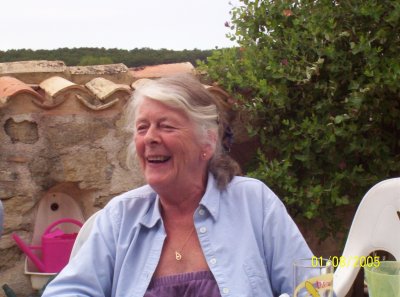Nancy Homewood grew up at Peach Croft Farm in Radley where her father, Charles Taylor, was the tenant. Nancy’s husband John Homewood took over the tenancy after her father retired. These are her memories of life there in World War Two.
As the 1930s drew to a close, we children felt the apprehension of our elders. A shelter, with an earth roof over a tin frame, was dug in the garden. We practised wearing our gas masks, as we sat inside on wooden benches, but did not ever have to take refuge in it. We were taken outside during the London Blitz on two successive nights and, looking eastwards towards Nuneham House, saw the sky red from the terrible fires. Another indelible memory happened – again on two successive nights – when Coventry was bombed. We looked up and could clearly see and hear the formations of German planes flying directly over the house, heading for Coventry.
In the early summer of 1942, we were taken to see what was happening in the newly constructed Dutch barn in the farmyard. We were told that we were not to talk to anyone about what we saw. In the barn were 20 or more wooden crates about 3 feet by 3 feet by 3 feet. Some had been opened and the contents assembled on the floor – red metal plates, gears, chains, canvas, rollers, and a huge collection of assorted nuts and bolts. Teddy Ballard of Abingdon Agricultural Engineers, one or two of his staff, my father and brother, a tractor driver and Sidney Alexander, who had joined the farm as a lad of 14 and remained with us all his working life, were there. This excited and enthusiastic team armed only with an instruction manual and their own experience were about to assemble the very first combine harvester in the county and I believe the first in the country. It had been secretly shipped from America from the International Harvest Company, on a convoy, to aid and increase Britain’s food production. More were to follow, but when the constructed ‘flat pack’ pulled by a tractor drove around the big front field alongside Whites Lane and Radley Road, the verges were crowded with many folk looking to see this amazing machine that could cut the corn, thresh it, store it in a hopper and leave a neat row of straw behind. On the first circuit of each field, there was a row of stalks and ears of corn compressed by the tractor and the combine (the cutter bar was to the right-hand side of the machine). This left enough for the traditional gleaners to gather corn for their own poultry.

For more about farming life in Radley during the war, see the Radley History Club book, Radley Farms and Families 1600-2011.

For more about farming life in Radley during the war, see the Radley History Club book, Radley Farms and Families 1600-2011.